LaToya Ruby Frazier is one of the four finalists currently eligible for the prestigious Aimia AGO Photography Prize, which awards one photographer with $50,000. Unlike most prizes of this stature, this winner is determined entirely by public vote.
In the photos below, pulled from her ongoing series The Notion of Family, LaToya uses her camera to document the inequity experienced in her hometown of Braddock, Pennsylvania. Taking photos is how she’s able to shed light on and fight back at the irresponsible corporate companies and corrupt political culture that has been responsible for the economic demise of her community. Her documentary photography isn’t just indicative of her reality but is an example of how much of America lives today.
LaToya’s work is powerful and comes with a strong sense of purpose: She refuses to be just another statistic. We asked her some hard-hitting questions and her thoughtful responses offer a tough and honest glimpse into the motivation behind the series as well as a bold perspective that we can all learn from.
SDTC: If this series was taken 10 years ago, how would it appear?
LaToya: If The Notion of Family (2002 – present) was documented ten years prior to its existence (which would be 1992) the images may have revealed the direct attack my family and community endured during the crisis of America’s War On Drugs. It could have potentially shown all the police brutality and government abandonment inflicted on African American and working class citizens. Today, all that history has been erased and now you see vacant lots and attempts to cover up the truth under gentrification and beautification tactics.
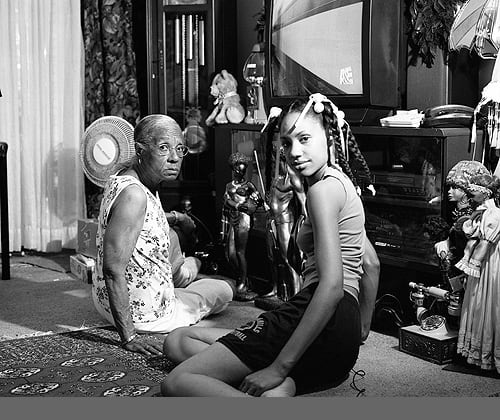
LaToya Ruby Frazier, Grandma Ruby and Me from the series Notion of Family, 2005, gelatin silver print, 50.8 cm x 60.96 cm
SDTC: What keeps community spirit alive?
LaToya: It depends on which community you are referring to. I can only speak from what has kept me going, and that is my refusal to be erased and my refusal to become a nameless statistic.
SDTC: How has The Notion of Family photo series changed/grown the relationship you have with your family?
LaToya: The way this work has impacted my relationship with my family has its ups and downs. There can sometimes be expectations and misunderstandings. But, there has also been empowerment and revelation. This was very important work to make with my mother and grandmother. In a sense it is larger than the three of us and at the same time not about us.
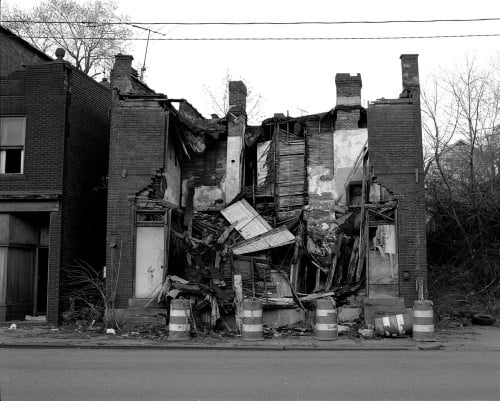
LaToya Ruby Frazier, Home On Braddock Avenue from the series Notion of Family, 2007, gelatin silver print, 50.8 cm x 60.96 cm
SDTC: Would you describe the process as cathartic?
LaToya: This process is not cathartic at all. I was forced to document my way out a situation and have now taken on a larger task to shed light on a social landscape most citizens choose to pretend does not exist. Shedding light on perpetual man-made crimes against humanity. Another way to describe it can be in the words of Gordon Parks, “I picked up a camera because it was my choice of weapons against what I hated most about the universe: racism, intolerance, poverty.”
SDTC: When you look at your work, how does it make you feel?
LaToya: When I look at my work I feel that I have so much more work to do. It’s never enough.
SDTC: In a situation like this, where do you direct your anger?
LaToya: I have no anger to direct. I only have heartache. I am not angry, just heartbroken sometimes. Faith, Hope and Love see me through.
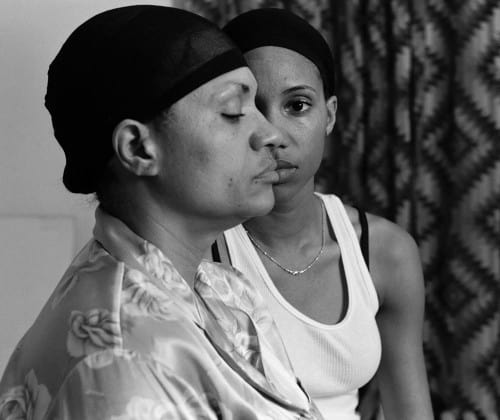
LaToya Ruby Frazier, Momme from the series Notion of Family, 2008, gelatin silver print, 50.8 cm x 60.96 cm
SDTC: How has photography helped you deal with life?
LaToya:Photographing the hardships of my personal life has taught me that what you go through validates you to be a witness to someone else. Documentary work has the power to touch other lives and can bring forth hidden histories.
SDTC: Whose work inspires you?
LaToya: Currently I am interested in learning more about Canadian photographer George Hunter’s industrial photographs. I am inspired by particular movements in photography that include social documentary work (Farm Security Administration) in the 1930s, The Photo League in the 1950s; Conceptual photography in the 1970s and the Pictures Generation through the 1980s.
SDTC: What’s your best advice for a young woman who is just beginning her career in photography?
LaToya: My advice to anyone starting a career in photography is to make work about what is closest to you and then work your way outward.
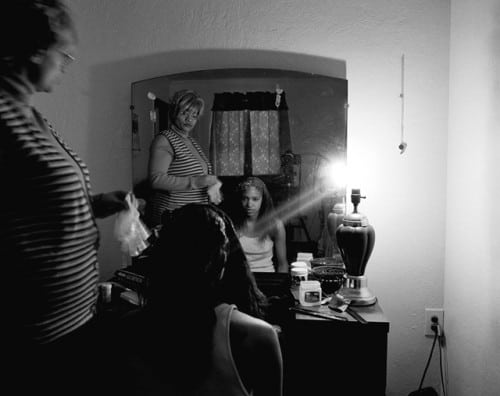
LaToya Ruby Frazier, Mom Relaxing My Hair from the series Notion of Family, 2005, gelatin silver print, 50.8 cm x 60.96 cm
SDTC: What discoveries did you make from start to finish? Personally or otherwise.
LaToya: This work is not finished. It’s only the beginning. It will continue. One important understanding I gained is that you cannot separate the body from the landscape. In fact your environment forms and shapes your body physically and psychologically. Industrial capitalist have scarred and discarded the working class body. Our bodies are not our own.
LaToya Ruby Frazier’s work currently being exhibited at the AGO alongside the other Aimia AGO Prize finalists. The winners announcement will take place on November 7th at AGO’s FIrst Thursday. Make sure to cast your vote!


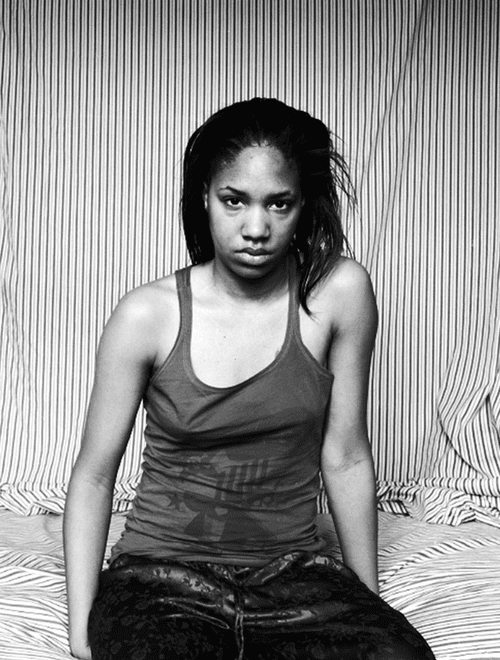

 Follow Us On Instagram
Follow Us On Instagram
